Millions of Americans from all walks of life struggle with opioid use disorder (OUD) every day. The impacts of OUD are far-reaching and have taken an enormous toll on individuals, families, and society. Medication-assisted treatment (MAT), as part of opioid rehab, is the gold standard of OUD treatment in most programs.
The U.S. Food and Drug Administration (FDA) approved Suboxone to treat OUD in 2002. While Suboxone has been part of effective OUD treatment for countless individuals, it remains widely misunderstood. Suboxone is not meant to cure OUD but rather to help individuals control cravings, manage withdrawal symptoms, and prevent relapse as they progress in treatment and recovery.
At Athens Recovery, we recognize the importance of MAT, including Suboxone, in helping clients break the cycle of OUD and chronic relapse. However, we also know that medication-assisted treatment is not suitable for everyone. Contact our team at 844.959.4998 to learn more about Suboxone and see if it is right for you.
Is Suboxone Addictive?
Suboxone is a Schedule III controlled substance, meaning it has medical value yet carries a moderate risk of addiction. As such, only doctors with special certification can legally distribute it. When used as prescribed, the risk of Suboxone addiction is very low. However, your body can develop a physical dependence on Suboxone.
Many people confuse physical dependence with addiction, lending to the misinformation about Suboxone. Generally, “addiction” refers to a loss of control, despite harmful consequences, because of changes in the brain related to prolonged substance abuse. Suboxone has a “ceiling effect,” meaning you do not experience stronger effects by taking larger doses.
“Dependence” is when your body gets used to the presence of a substance, and you experience withdrawal symptoms without it. As with most medications, if you skip doses or suddenly stop using Suboxone altogether, you will experience withdrawal symptoms. Additionally, it is common for individuals with OUD who are not in opioid rehab to misuse Suboxone to lessen the withdrawal symptoms of substances like heroin, which also contributes to the myths about it.
Suboxone Withdrawal Symptoms
One of the ingredients in Suboxone, buprenorphine, is a partial opioid agonist. Therefore, Suboxone withdrawal symptoms are similar to other opioids and may include the following:
- Anxiety and depression
- Sweating and chills
- Digestive problems, like abdominal cramps and diarrhea
- Nausea and vomiting
- Headaches and muscle aches
- Fever
- Tiredness and insomnia
- Intense cravings
When Suboxone is used with other substances, particularly alcohol or benzodiazepines, withdrawal symptoms may worsen and can potentially be dangerous. If you are medically ready to stop using Suboxone, it is essential to do so under medical supervision to avoid withdrawal symptoms.
How Long Does Suboxone Withdrawal Last?
The duration of Suboxone withdrawal varies among individuals and depends upon several factors, including physiology, how Suboxone was used, how much was taken, and for how long. For example, symptoms may be more severe for someone who injected it compared to someone who took it orally. Further, someone taking a higher dose for a more extended period will also likely experience more severe withdrawals.
A Look at the Typical Suboxone Withdrawal Timeline
In addition to those mentioned above, the Suboxone withdrawal timeline will also likely be different for those who are tapering off under medical supervision versus those who stop using it abruptly. Following is a general timeline for Suboxone withdrawal:
- Early symptoms – Within six to 12 hours after the last dose, symptoms may include anxiety, sweating, insomnia, and cravings.
- Peak symptoms – During days one to three, symptoms are the most intense and can include nausea, muscle aches, abdominal cramps, sweating, dilated pupils, vomiting, diarrhea, goosebumps, and intense cravings.
- Subacute withdrawal – In days four to 14, physical symptoms become less intense but can still be uncomfortable. Additional symptoms may include anxiety, depression, difficulty concentrating, irritability, fatigue, and insomnia.
- Protracted withdrawal – Beyond two weeks, some individuals may continue to experience anxiety, depression, insomnia, or cravings, but these diminish over time.
Post-acute withdrawal syndrome (PAWS) can also occur, though less commonly. Individuals with PAWS can experience intermittent waves of withdrawal symptoms for an extended period.
Learn More About Suboxone Withdrawal at Athens Recovery
Suboxone is a vital part of OUD treatment for many. If you have questions about Suboxone or need help with Suboxone withdrawal, Athens Recovery can help. Call 844.959.4998 to speak with one of our team members or use our online contact form.

